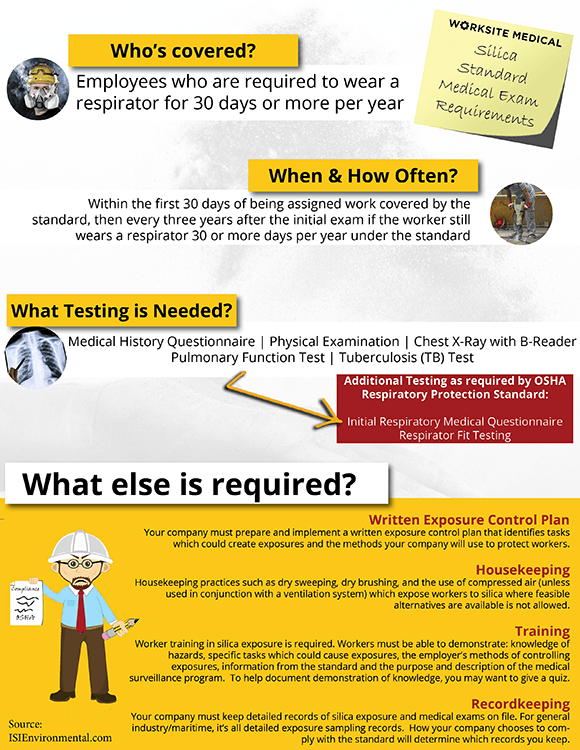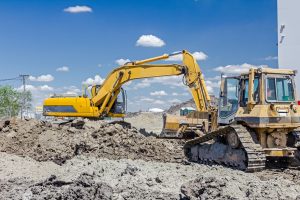OSHA Silica Violations Over Past Eight Months
It’s been eight months since federal safety regulators began enforcing the new silica standard for construction. Silica dust can be a dangerous presence on a construction site. When inhaled, it can scar lung tissue and even lead to the lung disease silicosis. While compliance is still a work in progress, new data from Bloomberg Environment breaks down exactly how this rule is being enforced.
OSHA first began enforcing the new silica rule in construction on Oct. 23, 2017. Since then, compliance officers have issued 117 violations. This initial number of violations may increase as it can take up to six months following an inspection for OSHA to issue a citation. The data showed that, when silica hazards were cited on job sites, they were almost always in tandem with other violations such as fall protection and thorough safety and health inspections.
Which Citations are Occurring Most Frequently?
The biggest change the new silica standard made was lowering the permissible exposure limit by 80 percent. Unsurprisingly, the majority of citations were due to failure to conduct an assessment of worker exposure to respirable crystalline silica. OSHA’s main concern for any health standard is ensuring that the employer complies with permissible exposure limits and completes proper exposure assessments.
(Related: Silica Medical Testing Requirements)
The second most common violations were for failing to adhere to the Table 1 list of equipment and tasks, required engineering and work control methods, and respiratory protection. “Table 1” refers to 18 construction methods that can be used to prevent silica dust from entering the air and can be an alternative to frequent monitoring. These methods can include vacuuming dust into bags or spraying water on silica dust to prevent it from blowing into the air.
(Related Article: Silica Exposure: 3 Reasons Why You’ll Want to Stay Ahead of OSHA)
Many employers misunderstand Table 1 to mean that respirators are the first and best option for dealing with silica dust. However, OSHA first expects a change in construction methods and tools that will reduce airborne silica. Depending solely on Table 1 is not an adequate means of preventing exposure.

Silica medical exam requirement chart includes written exposure control plan, housekeeping, training, and recordkeeping.
The third most common citations were due to a nonexistent or noncompliant written exposure plan. According to the silica standard, these exposure control plans must at least contain these four elements:
(a) a description of the tasks in the workplace that involve exposure to silica
(b) a description of the engineering controls, work practices, and respiratory protection used to limit employee exposure to silica for each task (i.e., the employer’s custom-tailored “Table 1” for their unique tasks)
(c) a description of housekeeping measures used to limit employee exposure to silica
(d) a description of the procedures used to restrict access to work areas, when necessary, to minimize the number of employees exposed to silica
Fines and Medical Testing
Eighty percent of these violations in the past six months were classified as serious. A violation can be labeled as other-than-serious if it is not an immediate threat to workers. Serious violations can face fines as high as $12,934. So far, the most costly proposed penalty was $9,239, which was eventually lowered to $6,929.
The silica standard for general industry, including manufacturers, will take effect on June 23, 2018. Medical surveillance is required to keep your employees healthy and remain OSHA compliant. As it did with the construction industry, OSHA will be offering compliance assistance for the first 30 days of enforcement for general industry and maritime for employers who make good faith efforts to comply with the new standard. Worksite Medical can come directly to your worksite to test your employees with all the resources of a lab in our mobile medical units. Call us today at 1-844-OCCUMED to schedule a visit.

Create a Less Disruptive, More Productive Occupational Health Plan with Worksite Medical!
Are you looking for a way to keep your team safe, while also limiting risk and increasing production? Simplify your medical plan today. We help team leaders like you develop less disruptive, more convenient occupational health plans that comply with complex industry standards, thus creating a healthier, more productive workforce. Take control of your medical testing program.




